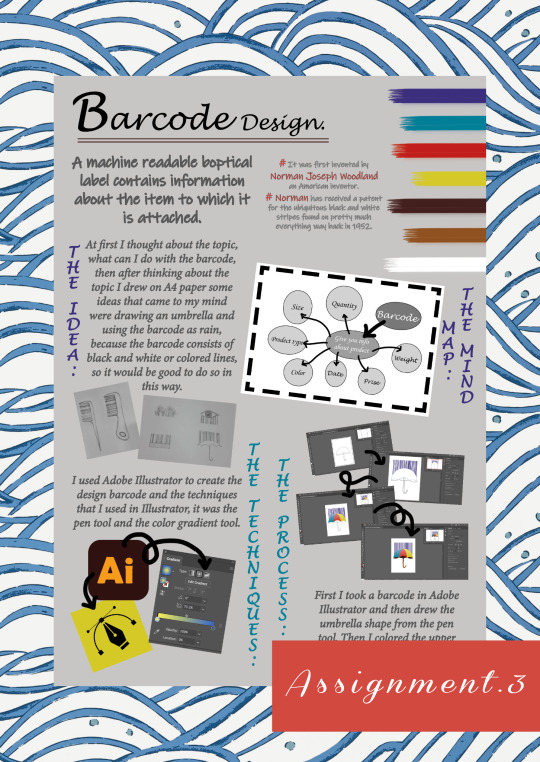#Techniques
Text

Polar Particle Unsealing Technique
#Polar Particle Unsealing Technique#Sakura Uchiha#Sasuke Uchiha#Sasuke Restuden#techniques#supplementary#Jonin#SasuSaku#Nuke-nin#medic-nin#Genjutsu type#Sensory type#Medical type
42 notes
·
View notes
Text
Teaching them techniques that will ensure victory!

Thomas Ian Griffith as Terry Silver in Karate Kid part 3 and Cobra Kai season 5.
Check out my Twitter & Instagram!
#thomas ian griffith#tig#cobra kai#terry silver#throwback#old man terry#kk3#cobra kai season 5#karate kid 3#the karate kid part iii#daniel larusso#kenny payne#silver bullet#quick silver#dojo#martial arts#techniques#victory
67 notes
·
View notes
Text







18 notes
·
View notes
Text
Coppering Techniques
From early on, the standard sheet of copper was 1,22m long and 35,56cm wide. The plates used for HMS Alarm (the first vessel with coppering) in 1761 were very thin, weighing only 340g per square foot. They wore away far too quickly, and much thicker plates were used from then on. By 1779 three thicknesses of sheet were available, weighing 907g, 793g or 623g per square foot, and these were to remain standard. They were distributed about the ship according to the wear they were likely to encounter. The thickest were in the bows, the medium ones just behind the bows, and the rest of the ship was covered in the thinnest type.

The following pictures show USS Constituion and her copper hull (x)

The coppering roughly followed the run of the planking, so the it curved downwards towards midships. The lowest strake was put on first, and each plank was to overlap its neighbour by about 1/2 in. On the first ships to be coppered, one sheet seems to have been placed directly above the corresponding one on the strake below; by 1779 this had been changed, and the strakes were staggered, as in brickwork. In 1779, to attach the planks to the hull, brown paper was used between the wood and the copper and then the plates were fastened with iron nails. From 1780, the hull was first coated with tar, then the brown paper was placed on top and then the copper plates were attached. The iron nails were replaced by nails made of a mixture of copper and zinc, because the iron interfered with the compass and could no longer be used.

Even though the modern reconstruction is shown here, it still follows the old pattern. Here, a tar foil is used as a barrier between the hull and the copper.

Early copper sheating stopped 30cm or more below the waterline, and the area above was covered with conventional wooden sheating. This was presumably because it was likely to be worn away by boats and anchors rubbing against the side. Wood was assumed to be less vulnerable to such wear, and it was easier to repair with the resources on board ship. It was still regarded as standard late in 1779. In 1783 it was ordered that the copper should end 60 cm above the waterline.
#naval history#coppering of the ships#techniques#royal navy#uss constitution#18th century#age of sail
70 notes
·
View notes
Text
DID VEGETA KNOW THE KIENZAN?
No, Vegeta doesn't know the Kienzan. There are just similar types of techniques.
VEGETA HAD AN ATTACK LIKE THE KIENZAN:

THE KAMEHAMEHA WAS LIKE THE GALICK GUN:

What happened is that the Earthlings had began to develop techniques similar to what other aliens had already done years before them. This is why Vegeta & Freeza have similar attacks similar to Krillin's Kienzan, why the Crane School's Dodan Ray is similar to Freeza's Death Beam, & why the Kamehameha that Roshi invented was similar to the Galick Gun that Vegeta used.
#Vegeta#Kienzan#Galick Gun#Kamehameha#Krillin#Goku#Kuririn#Son Goku#Dragon Ball#Dragon Ball Z#Dragon Ball Super#DB#DBZ#DBS#techniques
62 notes
·
View notes
Text
Names of special moves/techniques I’d make
(Any names that sound like other anime attacks is unintentional. There are thousands of them.)
Celestial Calamity Cannon: A massive ball of energy condenses to the size of a basketball, glowing with white and gold light, that when released Completely obliterates anything it hits when it explodes (can Atomize planets, even universes)
Emperor’s Decree: A barrier of gold that make a wall in front of me and anyone behind me, can block energy attacks and at my command send them right back.
Devine Punishment: Penguin Pursuit: (hundreds of glowing penguins appear and dash at blinding speed at the target. )
Soul Cleaver: Sword made out of spirit energy that cuts the soul as much as the physical body.
Eternity’s End: a pulse that cancels all abilities, skills, techniques, and transformations. A last resort technique that leaves everyone in the vicinity unable to use their other powers. (Basically an OP ability canceller)
Paradox Punch: A skill that ignores the defenses of an opponent, regardless of skill and abilities. It will always get through. Even distance doesn’t matter.
Storm of Self: (Basically the technique makes hundreds of me, all with abilities equal to my own.)
15 notes
·
View notes
Photo

Jean-Michel Pedrazzani - Techniques et Pouvoir de l‘Occultisme - Pierre Belfond - 1978
#witches#occultistes#occult#vintage#techniques et pouvoir de l'occultisme#techniques#pouvoir#occultisme#pierre belfond#jean-michel pedrazzani#presses pocket#crystal balls#1978
57 notes
·
View notes
Text

Masters At Work.
Techniques.
108 notes
·
View notes
Text
Hypnokink Basics: Special Techniques (pt 3)

Special Techniques
Introduction
This final section focuses not on inductions, but on the other stuff that hypnotists do or use as part of their hypnokinky scenes to make them go. Like the prior two sections this list is by no means inclusive, but just covers four of the more common and popular "adjunct" or "secondary" techniques that are often seen alongside hypnosis itself in the hypnokink community. That's not to say they are less important or less effective - many will tell you that these can be even more profound than traditional hypnosis itself, when properly and assiduously applied - but they do push the boundaries of what is hypnosis in some cases, or in others are simply techniques that are used alongside hypnosis to make it more effective.
Like the more modern inductions, many of these techniques can be traced to the work of Milton Erickson, or to his students, or to other modern hypnosis innovators. Although you might not know it to walk into to offices of some hypnotherapists (though that is changing), the field is growing and changing as neuropsychological research advances farther and farther. These techniques reflect that. They use more modern language that is at times more accessible, but is also more expedient, and is sometimes as informed by the needs of stage hypnotists or hypnokinksters as it is by needs of hypnotherapists.
Since a lot of the same caveats as covered the modern inductions covered these, I won't belabor this introduction any more, and instead move on to the four techniques covered today -
(by the by, sorry for the lack of direct examples on the last two. They are somewhat disperse techniques that don't lend themselves to discrete examples, and so I reasoned that the best way to give an easy example might be to link a reliable source who talked about them. It's paid, so I understand that reduces its utility for many, but she's in the community so that's something)
Fractionation
Example
If you have ever gone through a trance where your hypnotist brought you rapidly and repeatedly into, and out of, trance and felt absolutely wasted afterward then you have experienced fractionation. It is that process of dropping down into and then coming back up toward wakefulness and then dropping down and then coming back up (and down and up and down and up and down and up and down and up and down and up and down and up and down and... you get the idea), and each time you do it feels like you drop a little bit farther and come up a little bit less far. This works on a couple of different principles all at the same time.
First, it works on the principle of exhaustion. Every time you change state, every time you more from one mental 'place' to another, that takes some amount of mental focus or energy. That means that doing so repeatedly will quickly drain your mental reserves, and make you more sluggish, more prone to just going along and giving in, getting more and more relaxed. That will cause your mental defenses, such as they are, to drop that much more.
Second, it works on the principle of acclimation. It is kind of like walking down a footpath in the woods. The more you walk it, the smoother and better, more well-trodden, it becomes. The more you go into and out of trance, the more you get used to going into and out of trance, and the better at it you become. The more natural it becomes, the more able you are to do it more quickly. And, the more often you do it at the suggestion of that hypnotist specifically, the more comfortable you are doing so in the future. It is a quick way to build up a level of familiarity with a partner, provided that they are comfortable ceding that level of control - or become comfortable (see last paragraph) after they grow exhausted following multiple prior rounds of fractionation - to you.
Third, it works through controlled pattern breaks. Fractionation and Confusion (see last part of this series) are kind of like peanut butter and chocolate - they go very well together - and if you establish a pattern of up down up down up down up down up down and then down down down... well your partner might just find themselves very deep indeed. The one constant in their experience up to that point, the thing that has stayed the same, has been your voice and your suggestions and so they have followed them... and they have grown very accustomed to doing so without thinking. Going from "down up down" to "down down down" might seem a small change, but to them subjectively it probably just took them into somewhere within the Earth's mantle, if you have a solid rapport with them.
Put all of those factor together, and Fractionation can be a very powerful tool to introduce after the induction is complete. It's not much use when there is no trance state or rapport whatsoever to build on, but provided there is that foundation it can be very helpful. That's why it is commonly called a "Deepener" although the concept of trance depth could merit a series of articles unto itself.
Rapid/Instant Induction
Example (video - for the record I'd call this "rapid" not "instant" but the distinction is pretty vague and pointless)
For when you want to "get to the 'good' stuff" (unless you're like me, and the trance is the good stuff) as soon as possible or walk up to someone and have them as putty in your hands within five seconds flat, there is nothing quite like a Rapid or Instant Induction. There are a number of different techniques for these, and there are people who are particular experts in those techniques, but the general basis comes down to three factors: 1) Establish yourself as a confident and trustworthy, or credentialed, person as quickly as possible 2) Assert that the person will drop into trance in a manner that does not allow them to question that 'fact' 3) Interrupt the process of their questioning it through some sort of physical or verbal process in order to get them to give up the fight and just give in
What that often looks like is walking up to a person with a confident sparkle in your eyes, looking them in the eyes, assertively saying "Sleep!" and then pushing their head over backwards while catching them by the small of their back. They are so caught off-guard by the physical disruption that they don't have time to question whether they should "sleep" (i.e. trance) or not and so they just... do. That is obviously situational and depends on the person being placed in trance, the relationship they have with the person doing the trancing, how that person delivers the line and the touch, the place that everything happens and a dozen other nuances, but it works often enough that it gets its own entry here and is plenty fun to do for people who enjoy it. Also, you have examples like the handshake induction shown at the link, where the hypnotist tells their partner what is going to happen and essentially allows them to hypnotize themselves. If you watch, between the second and third handshake, when the hypnotist says "and you will stay standing..." and other verbiage like that... that's not an induction, that's a suggestion. She's already in enough of a trance that she's responding to suggestions for him.
All of that may well seem like magic, and that is why instant inductions are so often the province of stage magicians and stage hypnotists, but they are really a blend of three things - confidence, trust, and a pattern interrupt. You can use any number of different manifestation of those three things to get it done, but that's what it all boils down to.
Neuro-Linguistic Programming (NLP)
I don't have an example for this one and will instead link to "Kinky NLP" by sleepingirl
NLP is a bit of an odd creature, because it has such a woolly definition. In the broadest possible terms, it is a suite of techniques that use the way we talk about things to reframe the way we think about things, as a kind of in-language extension of the Sapir-Whorf Hypothesis. It also overlaps with conditioning/brainwashing to some extent.
One common technique of NLP is called an "Incantation," though hypnokinksters might better know it as a "mantra." Repeatedly saying something that you want to be true or to make true about yourself - "obedience is pleasure," "I am a good doll," "I am my Master's perfect fucktoy" or whatever you might want as part of your kinky dynamic - can gradually, over time, make it more and more true and transform your mind. It can reprogram your brain, bit by bit. This has limits, of course, in that there are certain things that are hard-wired into your brain that are unlikely to change, but there are many more than you think that are not. Using something like this does not require a hypnotic induction to work. It might benefit from one, or from being in some other altered state (heightened arousal or the edge of orgasm, for example), but it doesn't require any of that in order to work. All it needs is motivation, and to be used with regularity over time.
A second technique which is often poached from the NLP playbook by many hypnotists, and many (pardon me I feel a bit ill) "pick-up artists" is "mirroring." This technique is, essentially, to help build rapport with someone more quickly by mirroring their body language, word choice, and so on - taking a drink whenever they take a drink, using the same words they do when describing things, etc. I bring it up because this is an example of a technique that, when used carefully, thoughtfully, and in moderation can be very helpful... but when used thoughtlessly and carelessly, can be less than useless.
For example, if you start mimicking every action of a person to whom you are speaking, leaning in altogether too close for comfort, using their exact body language, their precise word choice... that's incredibly creepy. Don't do that. The way I employ mirroring is more targeted. If I notice that a partner consistently uses a certain word to describe something in trance - they see a "scarlet" ball of light, for instance - then I make sure to use that word, not some similar word like "red" or "crimson" when I describe that same thing. However they tell me they experience trance, that is how I describe the experience back to them. If they make it clear that they want [x], [y] and [z] in trance, then that is not only what I want, that is what I am enthusiastic to provide (though that's because of my own personal proclivities as much as it is any mirroring on my part, but it does serve the purpose).
Conditioning/Brainwashing
I don't have an example for this one and will instead link to "The Brainwashing Book" by sleepingirl
Another topic on which a whole book could (and has! See above) be written. Conditioning is the process of gradually altering the mind into a form that differs from wherever it began, according to some agreed-upon plan. That sounds really broad and like it could mean a million different things, because it is and it could. You could condition someone to be totally submissive to you and unable to not do what you tell them to do. You could also condition someone to be totally unable to orgasm except under certain conditions. You could condition them to be a perfect housemaid and derive sexual pleasure from their daily chores. You could condition them to do, be, and think almost anything you can imagine - the sky's the limit (but remember consent!).
The process is gradual and always takes some time, and it always needs to be highly tailored to your specific goals and your specific partner, but generally conditioning is split into two branches - "operant conditioning" and "classical conditioning."
Classical conditioning involves associating involuntary responses (the 'classic' example being salivating from Pavlov's dogs) with an external stimulus. Essentially, you link that neutral stimulus (say, a finger snap) with an involuntary response (say, an orgasm), through a conditioned response. This is done through repeated association. Pavlov made his dogs salivate by giving them food and then ringing the bell, until it got to the point that he could simply ring a bell and they would start salivating. In the other example, after enough times masturbating and needing to ask permission, only being allowed to cum when you snapped your fingers... well, you get the idea. This might not result in a spontaneous orgasm from snapping your fingers, and the effect may (will) extinguish with time if not regularly reinforced, but depending upon the subject and the exact means of conditioning the results may vary dramatically.
Operant conditioning, on the other hand, involves associating voluntary behaviors (the classical example being pressing a lever) with external stimuli. In this case you might give a partner a trigger that causes them to feel a pleasurable sensation all over their body, or to feel a deep sense of happiness or satisfaction when you utter the words "Good Boy/Girl/Toy" - and then, utter those words whenever they obey you. That will cause them to feel good whenever they obey you, which will lead them to obey you more and more, which will lead them to feel better, and then even if the trigger does extinguish at some point obeying you might have at that point become second nature to them. That is a fairly simple and straightforward example, and it goes much farther than that - being as there are four distinct types of operant conditioning and various ways in which it can be done - but that gives you an idea of what can be accomplished with it.
Conclusions
With this series I've really only scratched the surface of the techniques that are out there in the hypnosis and hypnokink space, that are available for one partner to take mental control and wrap mental bonds around another. Like any other form of bondage, though, the foundation of hypnotic bondage is and must be one of consent, rapport, and safety. If it is not that then you are risking the safety and health - mental and physical - of your partner. Don't do that. It is not worth it. Just like it is not worth rushing into shibari only to get nerve damage, it's not worth it to rush here only to wind up with other forms of it. If I've emphasized nothing else, let me emphasize that.
This is a wonderful kink and community and it can bring people incredibly close to one another, in ways that few others things can. It can feel sometimes like hypnosis and hypnotic bondage creates a real mind-to-mind bond, a kind of rapport that is almost impossible to replicate by other means... but that special bond must be treated with the respect, concern and ultimately responsibility that it deserves. It's a powerful thing, being able to snap your fingers and give someone a mind-bending orgasm or to control their body like a puppeteer. Don't forget that, and while you are having those fucking fantastic experiences, take the time to do it safely.
This article is part of my Index of Writings on Safety & Consent (in the other writing section at the end)! Click the link for the rest of my articles on the topic.
This will take you to Part 1 on Classic Inductions
This will take you to Part 2 on Modern Inductions
#hypnokink#hypnokink basics#consent#safety#techniques#hypnokink community#special techniques#fractionaction#rapid induction#instant induction#no-induction trance#NLP#neurolinguistic programming#conditioning#brainwashing#operant conditioning#classical conditioning
92 notes
·
View notes
Text
You can also cast a single spell in many stages over many days.
In the way I work even a simple spell may have many components.
So the first session can be imbuing the vessel with metaphysical power to prepare it for holding a spell (same concept as seasoning the cast iron, really).
Second session can be calling certain Powers and asking them to imprint their influence on the object.
Third session can be feeding the connection to those imprinted Powers and finally announcing spell intent.
Fourth session can be then actually "casting the spell," which now at this point has a lot less work going into it, and things will flow a lot more smoothly, because of all the prep work.
Fifth session can be activating or releasing. Etc etc.
Which may sound like a lot of steps, but when I do a spell I have to do all those steps anyway. My point is, if your spellcasting style has a lot of steps, maybe it's possible to redistribute the workload by working one spell over multiple stages.
64 notes
·
View notes
Photo

14 octobre 1888 : tournage du premier film de l’histoire par Louis Le Prince ➽ http://bit.ly/Premier-Film Si la date mémorable du 28 décembre 1895 est celle de la première séance publique et payante du cinématographe organisée par les frères Lumière, on peut considérer que le premier « film » fut obtenu, grâce au procédé de chronophotographie, sept ans plus tôt par l’inventeur Louis Aimé Augustin Le Prince
#CeJourLà#14Octobre#Film#Cinéma#Cinématographe#LePrince#Inventeur#Chronophotographie#Photographies#Animation#Techniques#Technologie#Inventions#histoire#france#history#passé#past#français#french#news#événement#newsfromthepast
12 notes
·
View notes
Video
youtube
(via Mike Lynch Cartoons: Video: Pencil Sharpener History)
16 notes
·
View notes
Text
3rd Assignment of #FA222 🖌️
Final work & Mood board
@patriciabarakat


🌟BARCODE DESIGN🌟
@uob-funoon
#art#drawing#sketch#final work#moodboard#fin art#graphic design#art and design#designer#artistic#barcode#barcode design#mind map#color theme#ideas#sketches#techniques#process#steps#umbrella#umbrella barcode
15 notes
·
View notes
Text

Caking fun.
14 notes
·
View notes
Text
Affirmations for Self-Compassion: Recover from burnout
It's safe to rest.
It's OK to finish for today.
I'm allowed to relax.
I'm enough right now.
I give myself permission to relax and recharge.
I'm exactly where I'm meant to be.
Whatever I have done today is enough.
I am defined by more than my career.
I live life according to my truth and values.
I am learning to release control and surrender more.
Where I am in my journey is where I'm meant to be.
I'm creating when I'm resting.
I chose to accept that whatever I do is enough right now.
#efttapping#burnout#mental wellbeing#mental health#self care#self love#affirmations#positive affirmations#just relax#actually adhd#imposter syndrome#actually rsd#neurodivergent#anxitey#rejection sensitive dysphoria#createthelifeyouwant#techniques#manifestyourreality#keep trying#guide#take back your power
21 notes
·
View notes
Text

My tiny rosemary plant 🪴 I will say, though, that I started this from seed in June and it is quite big if you bear in mind that we’ve had a wonky growing season. I may have to bring her in for the winter, I would feel so bad at this point to let her die. Rosemary is perennial in some zones, but unfortunately winters are a bit too harsh here and it dies off.
September 10, 2023
#Rosemary#garden#plants#herb garden#gardening#rooftop garden#grow bags#container gardening#nature#pagan#green#goddess#zone 5a#western ny#southern tier#growing#growing season#urban gardening#techniques
11 notes
·
View notes